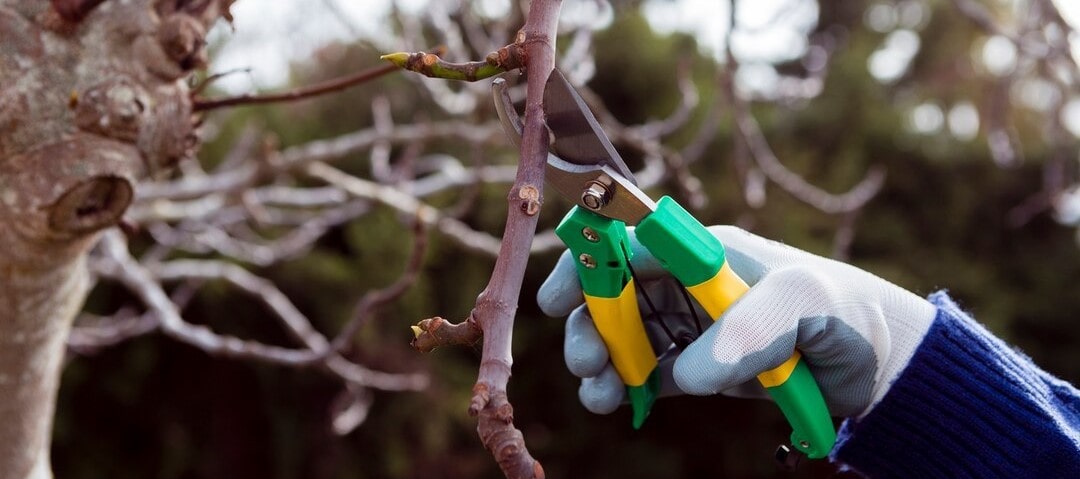Pruning of fruit trees and berry bushes is allowed all year round, depending on the type and age of the plant. In this case, garden crops are most often pruned in spring and autumn, sometimes in summer. But winter pruning is practiced least often.
To decide whether it is advisable to prune trees and bushes in winter, it is worth carefully studying this procedure. It has a lot in common with spring, autumn, and summer pruning.
However, winter pruning also has significant differences, which are mainly related to weather conditions and the condition of the plants.
So, let’s look at the main advantages and disadvantages of pruning fruit trees and berry bushes in winter.
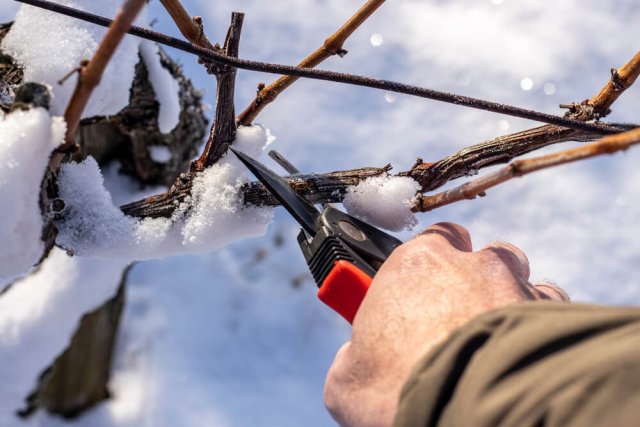
Pruning is vital for garden crops. After a competently carried out procedure, the crown takes on a healthy appearance, is well-lit and ventilated, and pests and phytopathogens stop multiplying in it.
Pruning plants is the key to a bountiful harvest and a long fruiting period. From the point of view of plant physiology, the best time for all types of pruning is spring.
Table of Contents
Benefits Of Winter Pruning
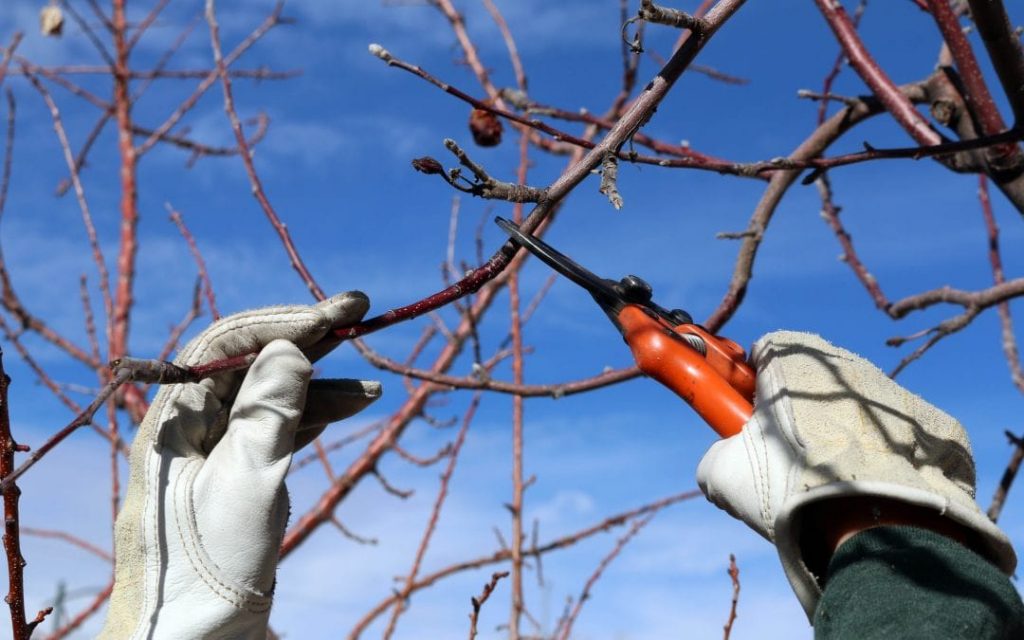
One of the main advantages of winter pruning is the ability to carry out work on almost any dry and clear day, without fear of starting the procedure at the wrong time – too early or late.
The plants are already resting, have dropped their leaves, the crowns are visible: it is easier to outline a pruning plan, detect problem areas (dead bark, areas affected by lichen or growths, weak branches that risk breaking off under the weight of snow, etc.) and perform all the necessary stages of work.
Also, when pruning plants in winter, the risk of bark scoring is reduced because the wood is easier to cut. But this rule only works in cold weather.
If the procedure is carried out in severe frost when the wood becomes brittle, scoring and stem ulcers may appear.
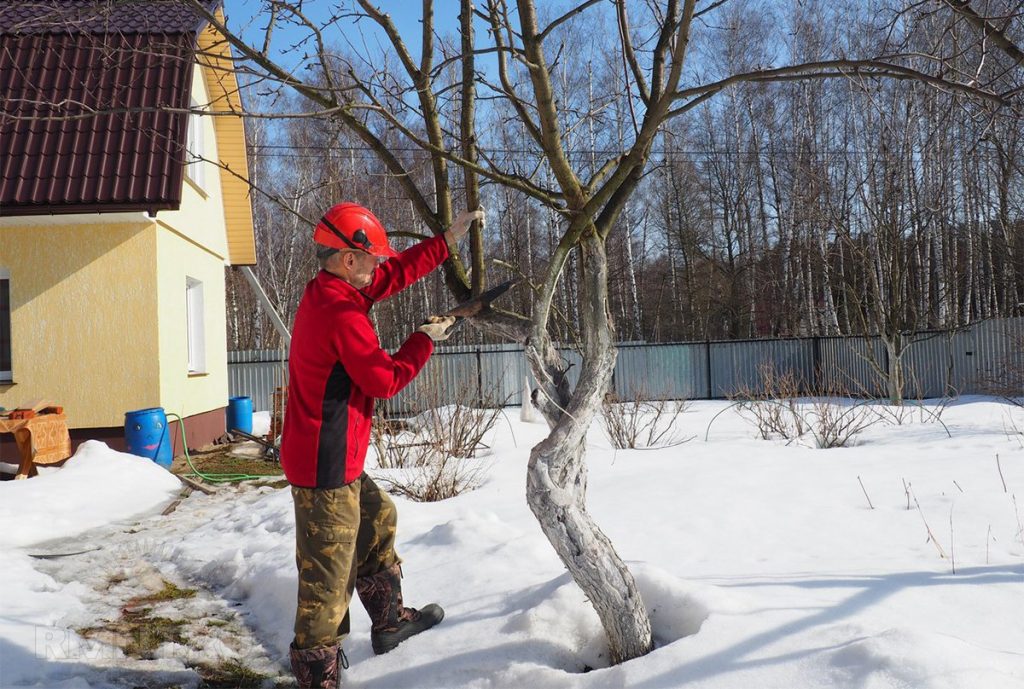
A bark tear is a piece of wood with pinched edges that is partially separated and raised above the surface of the tree.
A benefit of winter pruning is the reduction in pathogen activity during this time, which reduces the risk of infections. Pests and their larvae are also at rest.
Finding time for winter pruning is easier because the start of the new season is still far away. And in the fall, instead of pruning, you can do many other useful things, for example, protect trees from rodents or make a greenhouse.
Disadvantages Of Winter Pruning
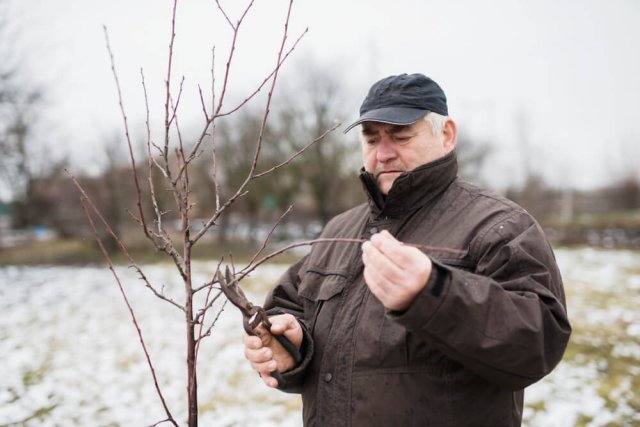
The garden prepares for winter all summer and autumn, gaining strength before long sleep, or hypobiosis. At the same time, plants are quite ready to endure some losses – after all, snow storms can sometimes be very destructive.
This means that the loss of several branches or parts thereof is unlikely to be a problem for strong and healthy specimens.
But there is also a danger: the resulting wounds heal worse or do not heal at all due to slow metabolism in winter. And ahead are thaws and the awakening of pathogenic microorganisms.
Often, it is these damaged plants that become victims of various infections, recover worse after pruning, and in some cases lose their ability to bear fruit or even die.
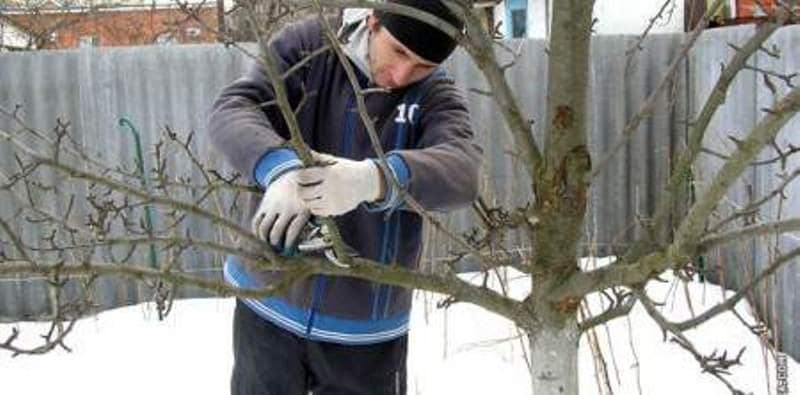
It is better to refrain from pruning plants that:
- do not belong to winter-hardy varieties;
- bore fruit abundantly this year;
- did not receive enough nutrition during the season;
- weakened by diseases and/or pests;
- planted this season;
- have already begun to decay.
Of course, wounds can and should be covered, but in the cold, it is sometimes more difficult to do this. In general, it is not always comfortable to carry out work, especially if there is a lot of snow on the site and it is difficult to get close to a tree or bush.

The situation is also unfavorable when the branches are covered with snow – visibility deteriorates and there is a risk of cutting off the wrong things.
It is also problematic to collect cut branches from the surface of the snow. But such brushwood is a useful material that can be used in at least a dozen ways in a summer cottage.
Trimming the garden is allowed only at temperatures above –5°C. The weather should be dry and clear.
In winter, the risk of injury to humans also increases: ladders and stepladders hold up worse on snow cover, and there is a high risk of falling and getting injured.
Plus, the daylight hours are shorter, which means you have to hurry, which can also negatively affect the process and result of pruning.

Also, after the procedure, it is sometimes difficult to carry out treatment against pests and diseases if it is postponed until pruning is completed, as well as whitewashing trunks and branches and other important garden work. As a result, the garden may be left without protection!
Another inconvenient moment: sometimes all the tools have already been washed and disinfected because the work has been postponed until spring, and then you have to take them out again, use them, and put them back into storage.
Thus, we can confidently say that winter pruning will not cause harm to strong frost-resistant plants. But it needs to be done correctly so that the garden retains the ability to bear fruit. It is better to prune the remaining trees and bushes in the spring before the sap begins to flow.
How To Do Winter Pruning
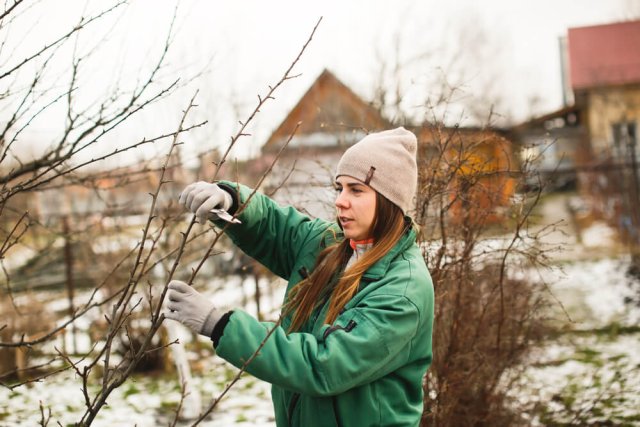
To work, you need to choose a clear, dry day. There should be no precipitation in the coming days, so you should carefully monitor the weather forecast. The air temperature should not fall below –5°C for several days.
Apple trees, pear trees, currants, gooseberries, barberries, and weeping mulberries tolerate winter pruning best. Heat-loving plants, for example, cherries, apricots, and peaches, cannot be pruned in winter!
To maintain the health of plants, it is recommended to trim only the most problematic branches: dried, damaged, deformed, or very diseased; shoots that most likely will not withstand heavy snow loads, as well as tops and shoots.
In strong specimens, a formative, regulating, or rejuvenating haircut can also be partially carried out. But it is allowed to cut no more than 1/4 of the branches.
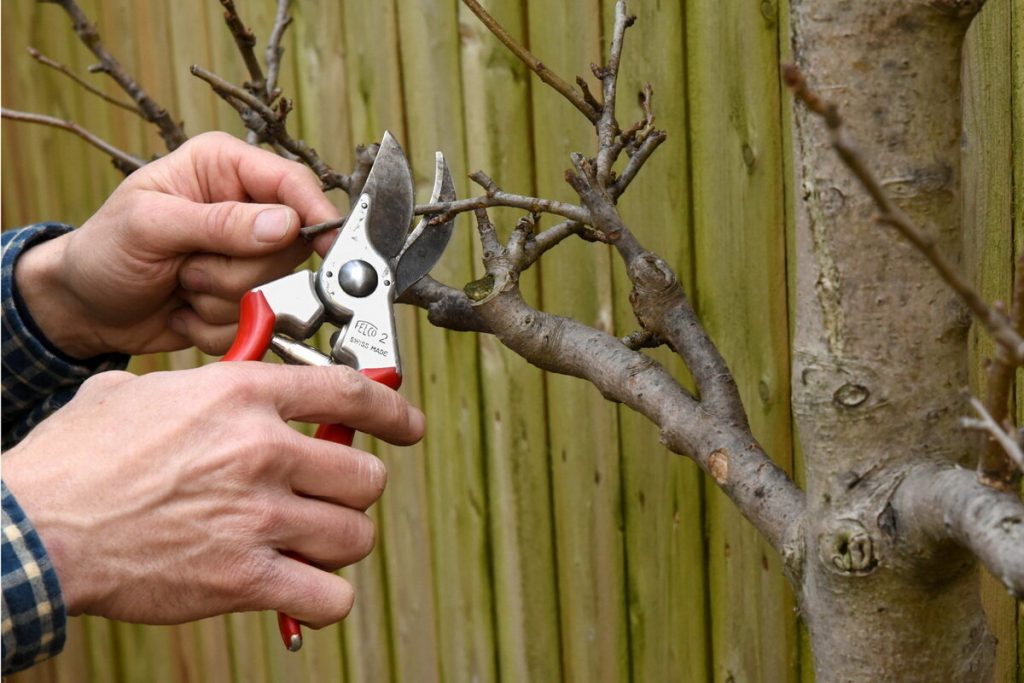
If there is a need to remove several large branches, this should be done over several winters.
To work, you need to prepare a sharp, disinfected instrument and wound healing agents. Although cold weather is unfavorable for pathogenic microflora, it is still better, as usual, to disinfect pruners or loppers after working with each plant.
Winter pruning can save time when it comes to strong, healthy plants that weren’t able to be pruned at the end of the season.
Also, the procedure is vital when there is a danger that the branches will be severely damaged by heavy snow. In other cases, such intervention while the trees are dormant is an unjustified risk, and it is better not to expose the garden if you want to get a rich harvest in the new season.
Unlock the secrets of successful winter pruning with the indispensable tool – pruning shears. Delve into our comprehensive guide for the best gardening tools.
Conclusion

While pruning is a crucial aspect of garden care, deciding whether to undertake winter pruning requires careful consideration of both advantages and disadvantages. Winter pruning provides flexibility in scheduling, visibility of plant structures, and reduced risk of bark scoring.
The procedure can help detect and address potential issues, promoting a healthier appearance for the plants. However, it comes with drawbacks, such as the risk of slower healing and increased vulnerability to diseases during the winter months.
Gardeners should exercise caution, refraining from winter pruning in certain conditions and focusing on strong, winter-hardy plants. Proper planning and adherence to recommended practices ensure that winter pruning contributes positively to the garden’s well-being.

